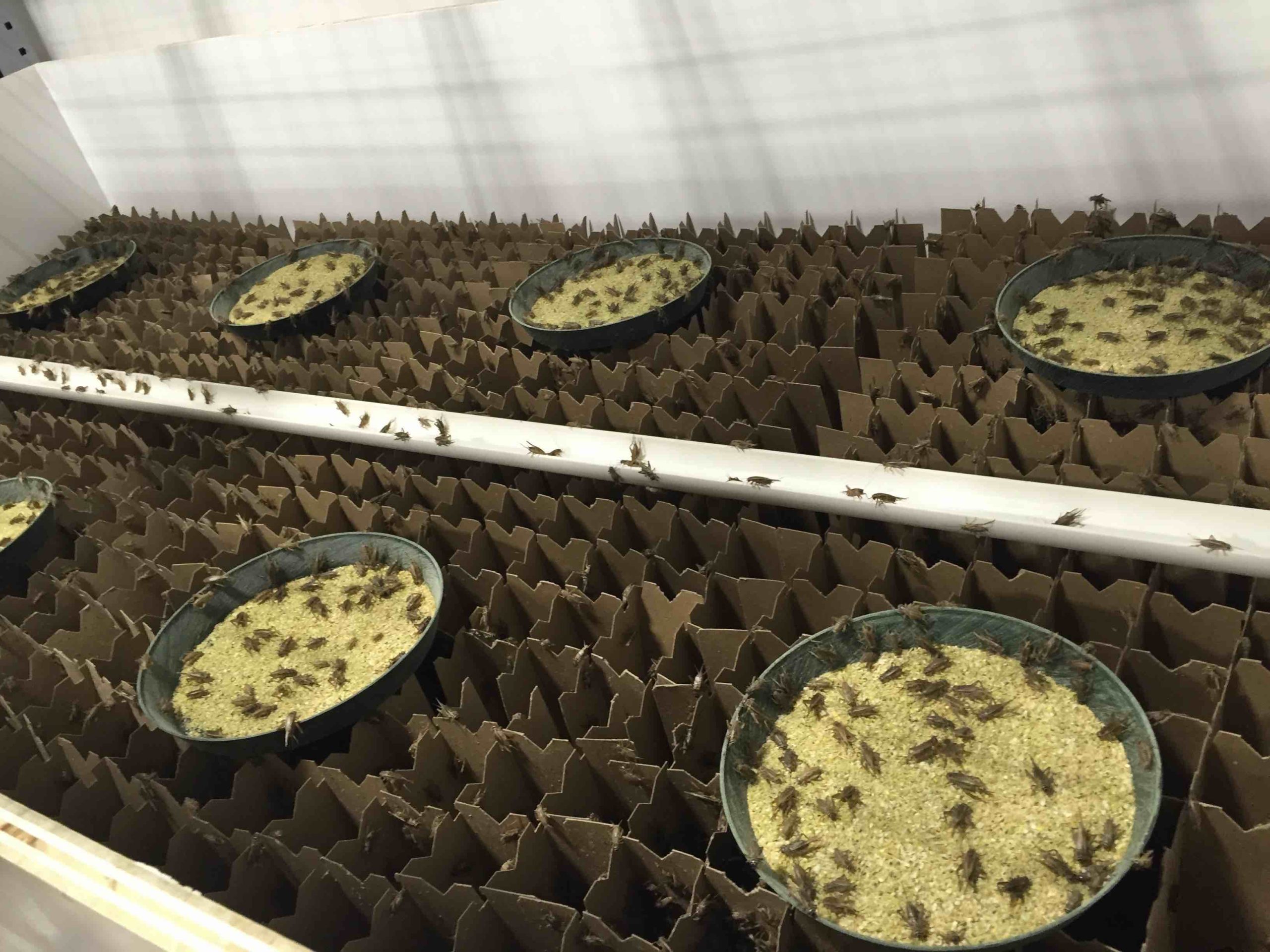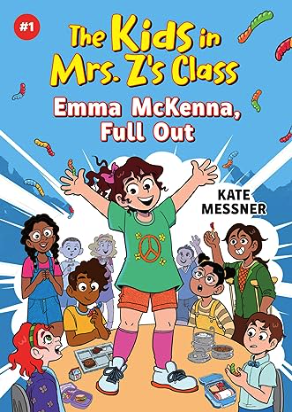Welcome to Countdown to CHIRP, a wonderfully nerdy blog series about the writing process behind my February 2020 MG novel, CHIRP. Here’s a little about the book from Bloomsbury, so you’ll understand what I’m talking about when I share all the nitty-gritty writing and revision details…
 When Mia moves to Vermont the summer after seventh grade, she’s recovering from the broken arm she got falling off a balance beam. And packed away in the moving boxes under her clothes and gymnastics trophies is a secret she’d rather forget.
When Mia moves to Vermont the summer after seventh grade, she’s recovering from the broken arm she got falling off a balance beam. And packed away in the moving boxes under her clothes and gymnastics trophies is a secret she’d rather forget.
Mia’s change in scenery brings day camp, new friends, and time with her beloved grandmother. But Gram is convinced someone is trying to destroy her cricket farm. Is it sabotage or is Gram’s thinking impaired from the stroke she suffered months ago? Mia and her friends set out to investigate, but can they uncover the truth in time to save Gram’s farm? And will that discovery empower Mia to confront the secret she’s been hiding–and find the courage she never knew she had?
In a compelling story rich with friendship, science, and summer fun, a girl finds her voice while navigating the joys and challenges of growing up.
CHIRP is a lot of things. It’s a mystery set on a cricket farm. It’s also about warrior camp, young entrepreneurs and robot builders, summertime joy, friendship, entomophagy, family, and finding the courage to speak up. Where does a story like this come from? For this one, the spark was the cricket farm.
My husband is a part of a volunteer group that helps people launch small businesses in Vermont. Early in 2018, he came home one day, dropped a folder on the kitchen table, and said, “You’re going to want to see this one…”
It was a business plan for a startup cricket farm called Flourish Farm. He knew I’d be interested because I’d been fascinated by this 2013 report that came out from the United Nations Food and Agriculture Organization.

The report is all about eating insects. It’s 150+ pages long (if you’re interested, you can read it here), but it boils down to two things.
-
- Insects are good for you. They’re a super-healthy protein. Also?
- They’re way more sustainable to raise than other things we eat for protein, especially cows.
The couple launching this startup cricket farm had read that same report. I was fascinated and made plans to visit their fledging insect agriculture setup. Not because I thought, “Hey, I’ll write a mystery set on a cricket farm!” That idea was still weeks away. I really just visited because I was curious. If there’s one thing I’ve learned as a writer it’s that following curiosity is always interesting – and sometimes, it leads to a story.
The cricket farm had started out in the couple’s basement and eventually moved to a cavernous warehouse in a Williston industrial park. It was filled with big wooden bins, which were filled with cardboard “cricket condos,” and, of course, crickets. Hundreds of thousands of crickets.


I loved the sound of this place (so much chirping!). I asked a pile of questions. The whole idea of entomophagy – eating insects as food – was so interesting! And I started wondering…what would it be like to be a kid in a family that was running a business like this? I’d been wanting to write another mystery, and this seemed like a fascinating setting.
So then I began doing research in earnest. I read a lot more about crickets and cricket farming. And I made plans to spend more time at Flourish Farm. I talked with cricket farmer Steve Swanson, who patiently answered questions, showed me all the different stages in the cricket life cycle, and walked me through the daily routines of the farm, from moving eggs into the incubation area, to dumping new baby crickets (called pinheads!) into the bins, to changing the water and giving them food.


As I learned all about cricket farming, a main character found her way into my imagination. Mia, I decided, was a girl who was feeling small, for reasons I couldn’t quite figure out yet. But I knew she’d been hurt. I knew she was moving back to Vermont after a few years living somewhere else, and I knew that her beloved grandma, who’d had a stroke that winter, was in Vermont and running the cricket farm. I knew that somehow, they would help one another heal.
So all through the winter and spring of 2018, I popped into the cricket farm, took notes, scribbled story ideas, and brainstormed character details. I thought and wrote a lot about Mia, sometimes journaling in her voice, sometimes writing personal narratives of my own in order to mine memories that were similar to those that were part of Mia’s story. Those writings don’t end up in the book, but for me, they’re an important part of laying an emotional foundation for the story that feels true.
By late spring, I was ready to start writing. In next week’s Countdown to CHIRP post, we’ll take a look at the process of taking all that research, brainstorming, and pre-writing and corralling it into some kind of plan for a rough draft.
For now, I’d love it if you’d consider pre-ordering CHIRP. If you do that through my local indie, The Bookstore Plus, I’ll personalize and sign your copy to be mailed out on release day. And wherever you pre-order, Bloomsbury will send you a special gift – a CHIRP poster and a class set of bookmarks to share!
Thanks for taking the time to read about CHIRP. I’m so hopeful that this book will find the readers who need it, and I’m grateful for the early praise it’s garnered from readers and reviewers alike…
“Kate Messner strikes the perfect balance of joy, pain, and strength in this deftly layered mystery about family, friendship, and the struggle to speak up.” – Laurie Halse Anderson, bestselling author of SPEAK and SHOUT
“Chirp is so many things: a mystery, a family story, and a story of the power of friendship. It’s about learning to speak out when it seems the whole world would rather you shut up. Sure to be passed from kid to kid to kid” – Laura Ruby, National Book Award Finalist and author of the York Trilogy
“Once again, Kate Messner has written a book that will be a dear and important friend to her readers. A loving and compelling ode to the joy of friendship, the many kinds of strength, and the everyday bravery of girls.” – Anne Ursu, author of THE LOST GIRL
“Messner deftly weaves together myriad complex plot threads to form a captivating whole. . . . Rich, timely, and beautifully written.” – Starred Review, Kirkus Reviews
“Messner addresses #MeToo themes authentically and with care as her story moves toward empowerment: Mia displays fear and confusion alongside a hope to reclaim the strength she once felt as a gymnast. Layering mystery elements, strong and myriad female characters, and a poignant analogy involving chirp-less female crickets, Messner gently guides Mia on a journey of resilience that both comforts and inspires.”
– Starred Review, Publishers Weekly






2 Replies on “Countdown to CHIRP: The Story Spark (and why it’s always a good idea to follow curiosity!)”